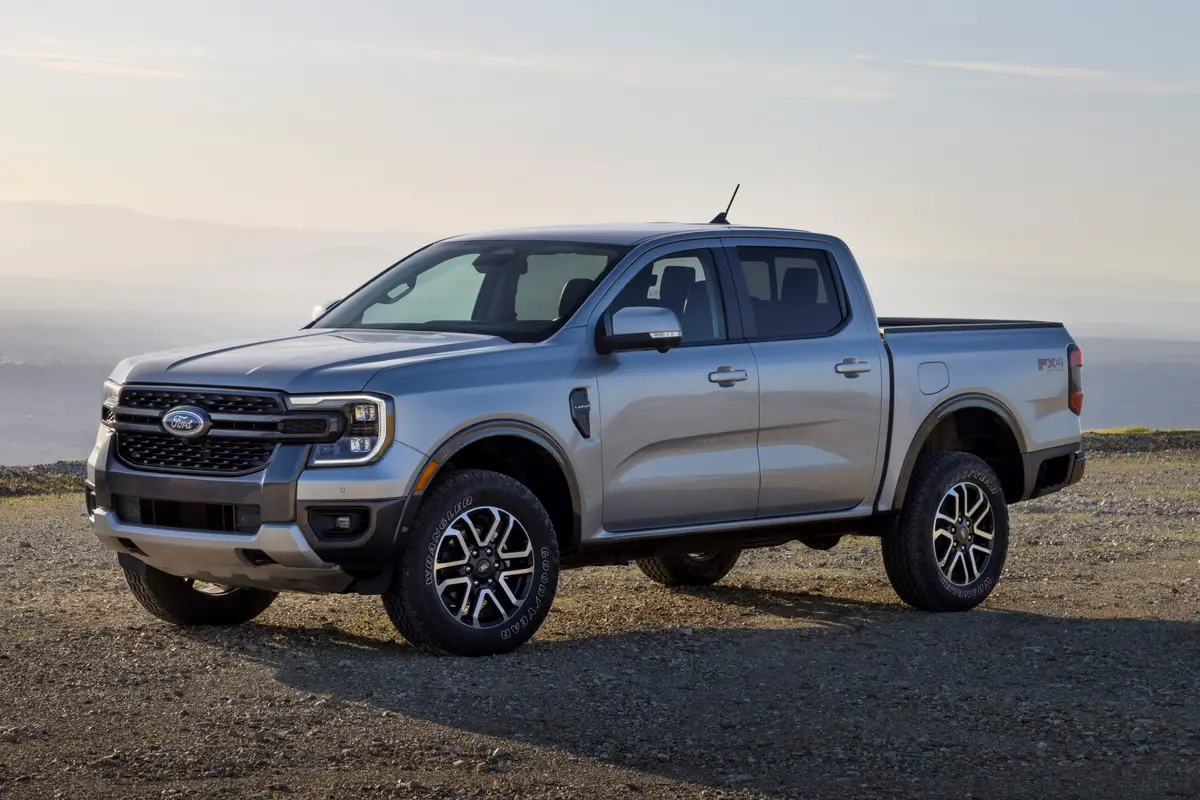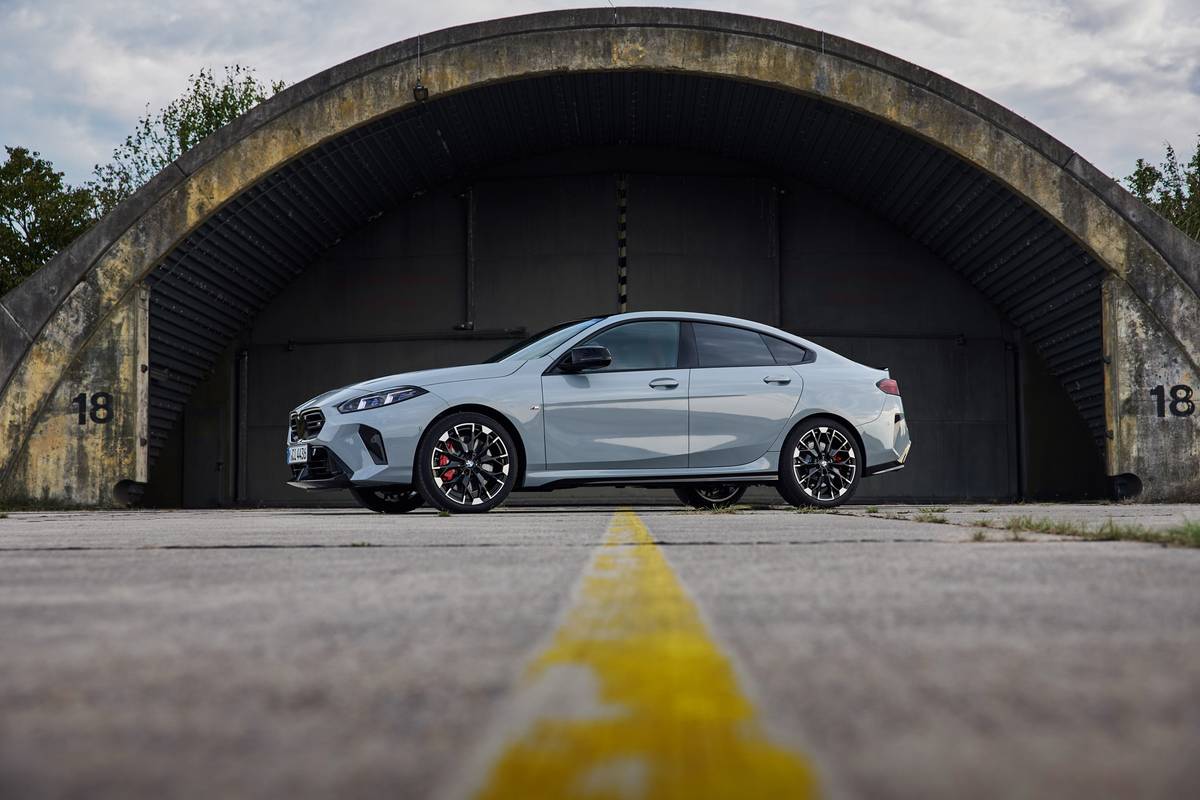Cincinnati.com's view
Farmers know, there comes a time when the faithful old plow horse has earned the right to spend the rest of his days grazing in the pasture . . . too bad the Buick division of General Motors isn’t so astute.
With the latest release of their flagship sedan, they’re simply embarrassing themselves. The Park Avenue has received a facelift, and while from a distance, it looks better, up close it’s as pitiful as a Botox believer.
A substantial mechanical makeover occurred for the 1997 model year, way back in the last millennium. In terms of automobile evolution, that’s like the Jurassic period.
The exterior restyling done for the 2003 model year is supposed to be an echo of the division’s glorious past; back are the vertical grille bars and – could I make this up? The three “portholes” of yore. Originally called VentiPorts, they still are functional, allowing better under-hood air circulation, the proud parent says.
Other changes, and I’m speaking now of the superior series, the Park Avenue Ultra, include 17-inch chrome-plated wheels, Buick shields on the grille and trunk lid, fake, but convincing, wood inside, bright aluminum sill plates under the front doors, turn signal diodes on the outside mirrors and dual chrome-plated exhaust tips.
One could well argue that going to 17-inch wheels from 16s is a definite improvement, as are the new “Gran Touring” suspension and rear stabilizer bar. Speedway, here we come! The problem is, this full-size sedan “nicely equipped” lives in the $40,000 range, where plenty of other sirens sing.
Within the family, it’s the close cousins doing the vocalizing: the Cadillac DeVille, Oldsmobile Aurora and Pontiac Bonneville, though truthfully, the DeVille’s the only one that outshines the Park Avenue.
And how about the Lexus GS 300? Or the Audi A6? BMW 5 Series? Any of those can carry a tune better than the aging diva.
I say this not with glee but with sadness, for over the years, I’ve enjoyed and spoken highly in print of the Park Avenue vis-a-vis its peers. In 1997, it stacked up pretty well. But this, alas, is 2003 and chromed exhaust tips aren’t going to cut it.
Of course the audiences for a BMW 5 and a Park Avenue are quite different, mainly in age. Those attracted to a Park Ave are older, old enough to have gotten most of the foolishness out of their systems; now they want comfort, for themselves and a couple of friends. This is where I found the Ultra lacking.
Perhaps it was the vaunted Gran Touring suspension, but I don’t think so. The ride over decent freeways and country roads was fine. But let there be one little raised spot or one little hole, and everybody in the cabin was made aware of it. I’ve driven cheap subcompacts that do a better job of filtering. A large, near-luxury sedan should isolate its passengers from the imperfect world.
I was also surprised at how much wind noise sneaked past the win dows and into my ears. I would still characterize the sound level as in the moderate range, but again, the expectation here is “subdued”.
There’s no problem with the powertrain, which, as it has for ages, consists of the ancient and honorable 3.8-liter V-6 prodded to overachieve by a supercharger. The base Park Ave gets the same engine in normally aspirated form. It makes 205 horses and 230 foot-pounds of torque, on regular.
The blown engine makes 240 hp and 280 foot-pounds, enough to make the big machine surprisingly swift. Just under eight seconds in the 0-60 dash is more than creditable. BUT, it took some practice. Despite having 61 percent of its weight on the front wheels and despite traction control, a throttle dump would smoke the front rubber fairly easily even under high-friction conditions (dry concrete).
In the mirror-image operation, i.e., stopping as fast as possible, the big boy shone. It has hefty discs front and rear. The pedal feel was surprisingly firm and easily modulated. Stops were impressively hard, and in “panic” mode, the antilock was a model of efficiency. The Park Ave also has GM’s StabiliTrak system, otherwise known as stability control. The point is to keep cornering forces within the realm of the possible. I found I could get ahead of it a little bit, but had to really work at it.
It can be switched off, though I don’t know why a typical driver would want to. Nor can I fathom why the disabling control is located on the end of the column-mounted shift lever, where an overdrive inhibitor would be more expected and more useful.
The four-speed automatic transmission was superb – quick, unobtrusive and hard to fool with quick, changing demands.
But ooh, the torque steer – heavy throttle applications made the steering wheel jerk around like those bucking broncos at the rodeo. There’s simply no excuse for that these days, even at this power level.
The hopped-up engine demands premium fuel. EPA’s estimate is 18 mpg city, 28 highway, more or less confirmed by my 25.4, achieved in fairly leisurely touring.
In the kind of service the Ultra is likely to get, it handled well enough – and certainly some credit goes to the fairly generous 235/55 rubber.
It was stable and responsive even during a severe rain. The degree of electrical steering assist is variable, depending on vehicle speed. It seemed to be figured just right, holding a course without a great deal of steering input and cornering quite respectably. It could not make up for the nearly 41-foot turning radius, though, which made grabbing a parking spot a two-step operation.
But it is a big car, with plenty of room in front and back. Five people, yes, for short trips; four, across the country. The 19-cubic-foot trunk is generous, and there’s even a rear-seat fold-down for lengthy objects like skis or whatever.
The Park Ave is equipped with frontal and side air bags, though not head-protective ones. It earned respectable marks in the government crash tests. It got four stars (out of a possible five) in every category: front and rear protection in a head-on, and front and rear protection in side impacts (with the side air bags).
Anomalously, it acquitted itself even better in the more taxing insurance industry test. The Insurance Institute for Highway Safety (IIHS) crashes vehicles off-center at 40 mph, whereas the government drill involves 35 mph and a full-frontal impact, which spreads the energy better. Vehicles usually fare worse on IIHS’s routine.
The Park Avenue, however, was rated a “best pick” in the large-car category (along with the BMW, Cadillac and Lexus referred to earlier.) There’s something to be said for tw o tons of mass, going in.
The car offered up for this test started life at $39,145, asked. At that price, it’s a well-equipped near-luxury auto, with most every geegaw a buyer might expect. The tester also had the “ultra luxury” package ($1,875), consisting of a power moonroof, CD changer, console and rear seat heating controls; the white diamond pearlescent paint added $550 (not as good as some); a head-up display, $300; and ultrasonic rear parking assist, $295 – go for it, you won’t be sorry with a car this big. Total, with freight and package discounts, was $41,935. According to Edmunds.com, you should be able to dicker nearly $4,000 off sticker. And that’s before the sizable incentives GM is using these days to prop sales. The Ultra starts to look more plausible in the mid-30s, where we can overlook some of its blemishes.
Latest news



